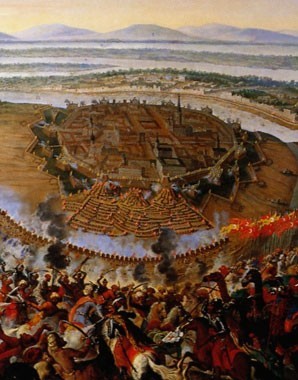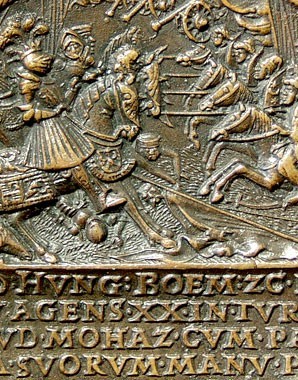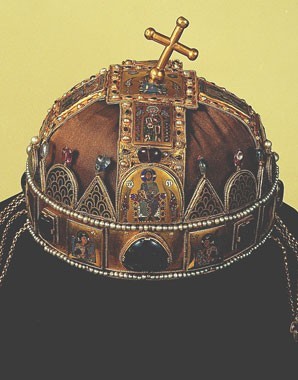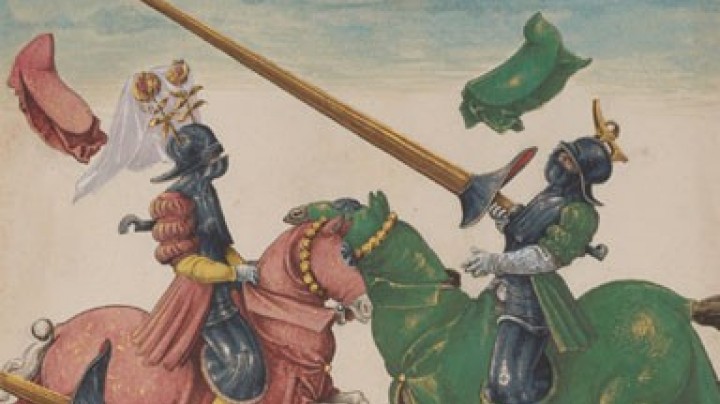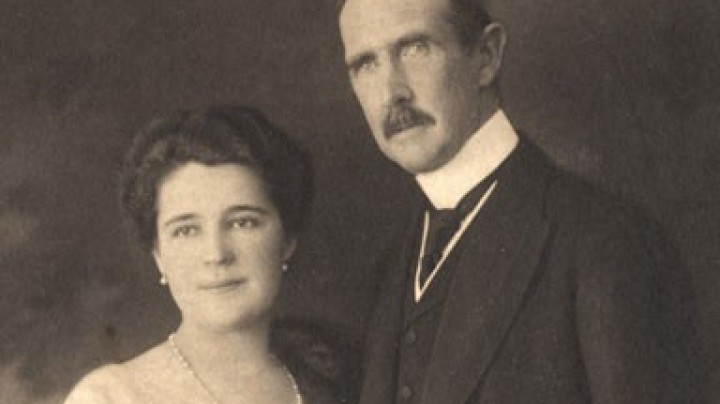A new great power in south-east Europe: the Ottoman Empire
The Battle of Mohács marked the beginning of the long ‘Turkish period’ in which the Habsburgs were faced with a powerful opponent in south-east Europe: the Ottoman Empire.
1453 was a watershed year in European history: under Mehmed II ‘the Conqueror’ the Turks took Constantinople – the capital of the once so powerful Byzantine Empire – and made it the centre of a nascent world power. The Turks, an Islamized central Asian horse-riding people, had been present in Asia Minor from the middle of the thirteenth century; the founder of the Ottoman Empire was Osman I, who from 1288 styled himself ‘Sultan’, using an Arabic word meaning ‘ruler’. Until the eighteenth century, the Ottomans were the most powerful rival of the Habsburg monarchy in south-east Europe; in Austrian historical writing these centuries are sometimes known as the ‘Turkish period’.
At the end of the fifteenth century, the Ottomans advanced to the west and occupied areas in Hungary and Bosnia, whence they frequently launched raids into Habsburg territory: almost every year, Carinthia and Styria were affected by Turkish plundering. Emperor Maximilian I was the first to take measures to ensure a regular line of defence against the Turks, laying the foundations for the Military Frontier of later times. In 1521 Belgrade, at the time a Hungarian frontier town, fell to the Turks, who then launched a new major offensive. The beginning of the Habsburgs’ Turkish wars came on 29 August 1526 with the Battle of Mohács, in which the Hungarian king Louis II was killed and his force of 25,000 defeated by a 60,000-strong Turkish army. Tens of thousands of Hungarian men and women were carried off into slavery.
At this point, in one of a number of fortunate successions that enabled the Habsburgs to extend their territories so greatly in the early modern period, Louis’s brother-in-law Ferdinand, later Emperor Ferdinand I, became king of Bohemia and Hungary. With this stroke of good fortune, however, Ferdinand also inherited internal conflicts in Hungary and the ‘Turkish problem’. A double election for the royal throne of Hungary led to both Ferdinand and the nobleman John Zápolya pressing their claims and to a civil war in which the Turks took the latter’s cause. Sultan Suleiman was already planning his next great campaign, which some years later was to take him as far as Vienna.
The Habsburgs’ new neighbours were now a constant threat. There followed more than two centuries of wars in which the Turks initially had the upper hand. Right through until the Second Siege of Vienna in 1683, the Habsburgs were on the defensive.






